Den 10 januari - Skogsäventyr i Kerala
Idag var vi tvungna att gå upp tidigt igen för att åka en timme till nationalparken Vazhachal - Athirappily Forest för en dagsvandring i skogen tillsammans med Gopi. Det är hans Blue Yonder som har organiserat turen. Denna nationalpark har bara varit öppen för dessa turer i två månader. Man organiserar dessa turer för att urbefolkningen, som tidigare bodde i dessa skogar 🌳, igen ska få en inkomst från skogen. Det var nämligen så att när de skapade nationalparken gav man alla som bodde i skogen ett hus utanför den blivande nationalparken. Det var väl en snäll tanke, men resultatet blev att den nya generationen inte längre har någon kunskap om sina rötter och hur man levde i skogen. Samt att det inte finns några jobb för dem. Därav har man skapat detta och återutbildar nu den yngre generationen om deras skog. Vi hade med oss två fina tjejer på vår tur. Sen hade vi rangern som är anställd av nationalparken. Han gav ett säkert intryck med sitt gevär, som han med lättnad sa att han aldrig har behövt använda.
Under turen såg vi två slags apor, Lion-tailed macaques och Nilgris Langur som tydligen är väldigt ovanliga att se. Min teori är att eftersom det normalt inte går så mycket folk här håller de sig inte undan. Man får se om de fortfarande är synliga efter något år med dessa turer. 🐒

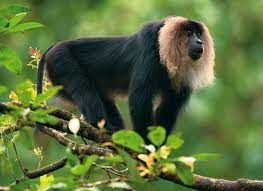
Men just nu håller man sig till bara 24 turister per dag som får göra dessa turer. Hela turen är 12 km, och det tog oss från 09.00 till 16.30. Men vi fick ett fint stopp vid floden Periyar, samma flod som är framför Gopis hus som vi åkt båt på 🙂, och det var väldigt häftigt att få sitta mellan två stora elefantbajsar 💩 🐘 från vilda elefanter. Bakom floden är ett tigerreservat som också kommer att öppna för vandringar om en månad och då med övernattning. Men man får övernatta långt från floden för här finns det krokodiler. Men där vi badade fötterna sa de att det var lugnt, skratt 😂
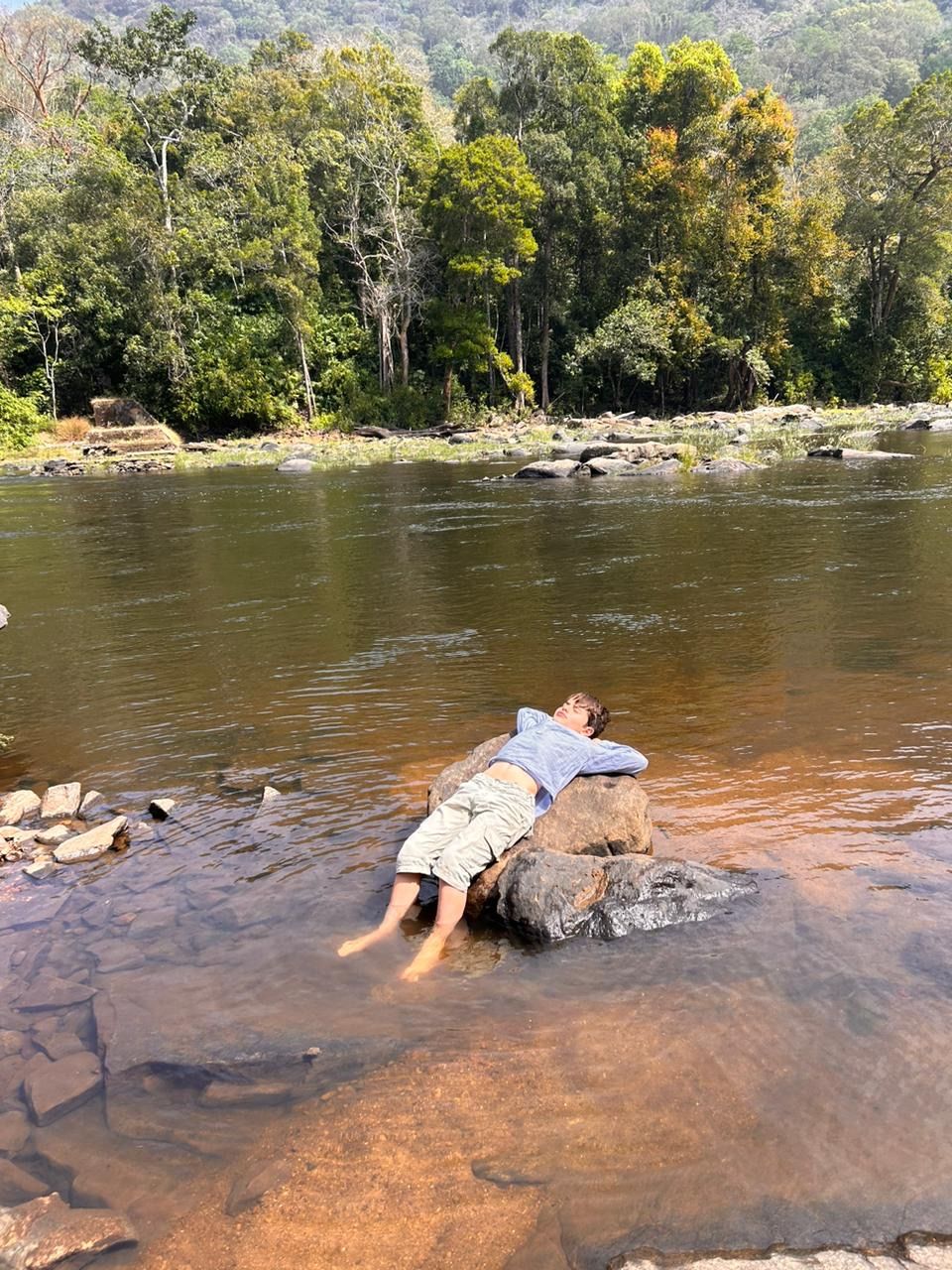

Vi såg inga tigrar eller elefanter, men som sagt dessa vackra apor, otroliga ekorrar Malabar Giant Squirell, giftiga små ormar Malabar Pit Viper och en enorm tusenfoting. Sen såg vi också spår efter en Sloth Bear som hade tjuvat honung 🍯 från jordbin. Jo, vi såg också bon från fågeln Hornbill. En fascinerande vacker fågel som vi tyvärr inte såg ”live”.
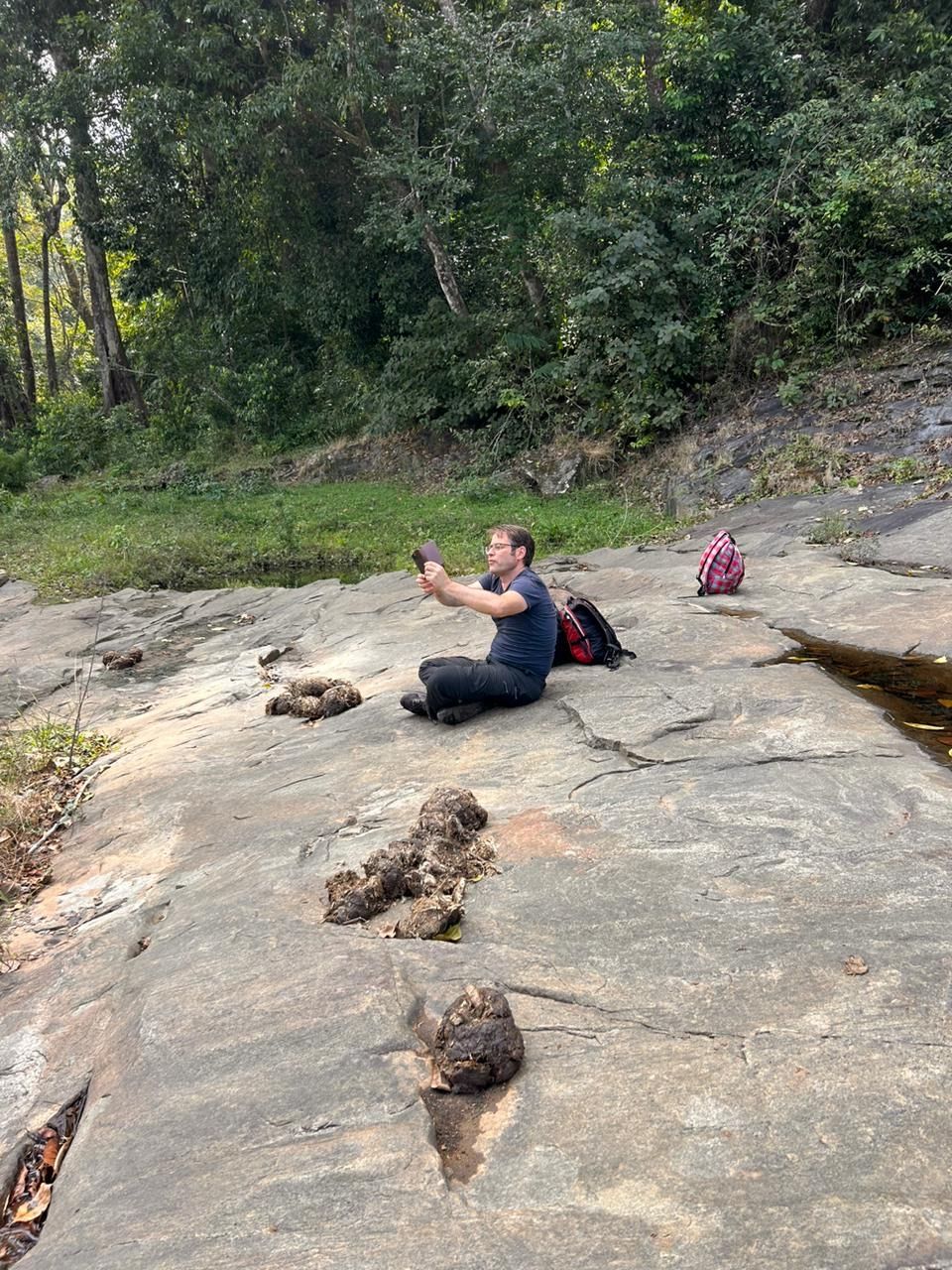
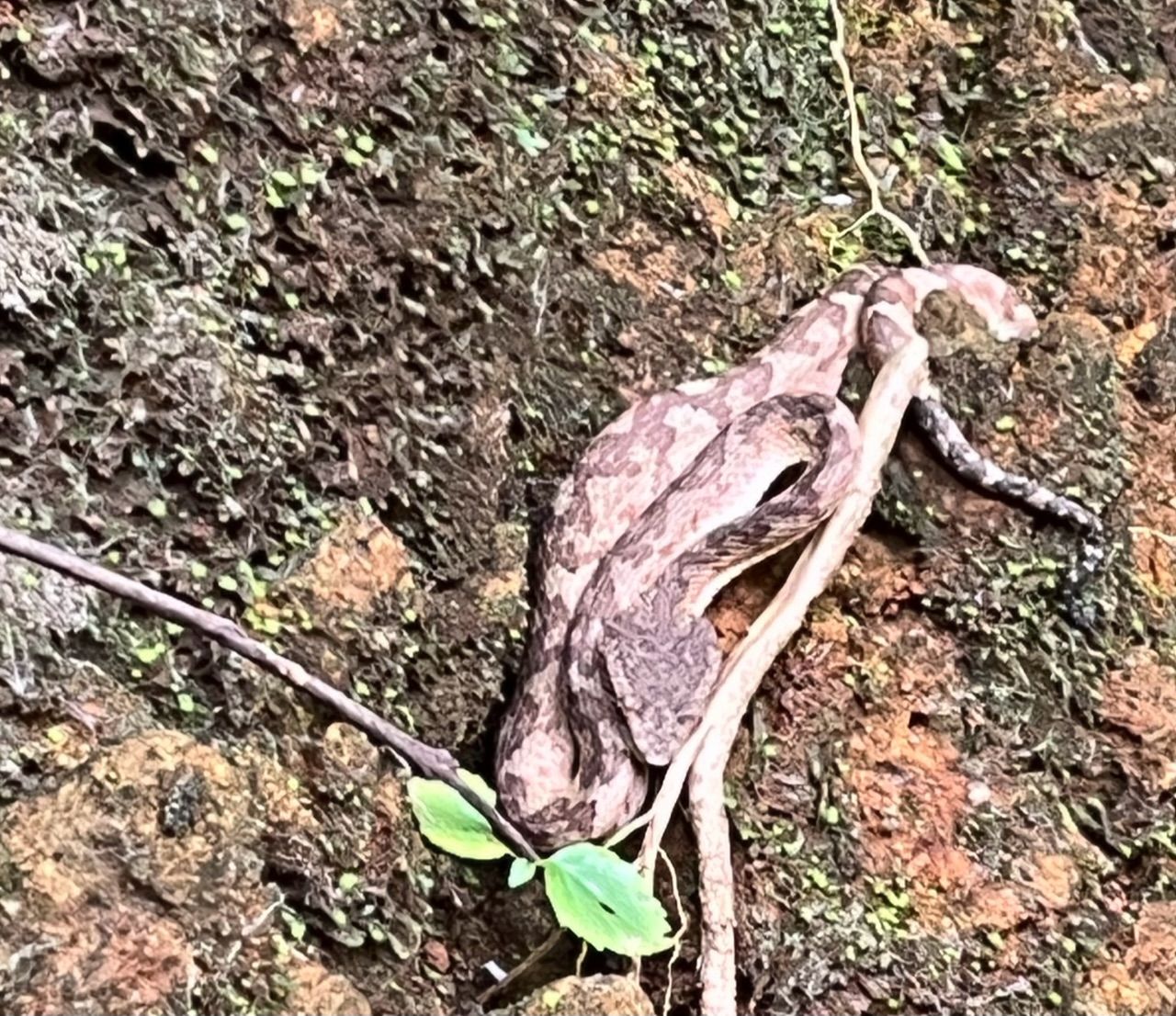
Lunch blev vi som sagt också bjudna på, och det var på en "station" där 2 rangers plus en kock bor 1 vecka i taget och sen har 3 dagar ledigt. Deras jobb är att kommunicera med de andra stationerna i parken. Idag är deras jobb väldigt lugnt, men för fem år sedan var det mycket tjuvjakt i parken. Men med strängare lagar och med den nya generationens kunskap har nu all tjuvjakt försvunnit. Är det inte fantastiskt, ger hopp. Väldigt intressant var att veta att vallen runt rangerhuset inte var skydd från krokodiler utan för elefanterna. På kvällarna drar man upp "landgången" så kan man sova säkert. Så häftigt att få vara i en sådan skog med vilda elefanter. 🐘
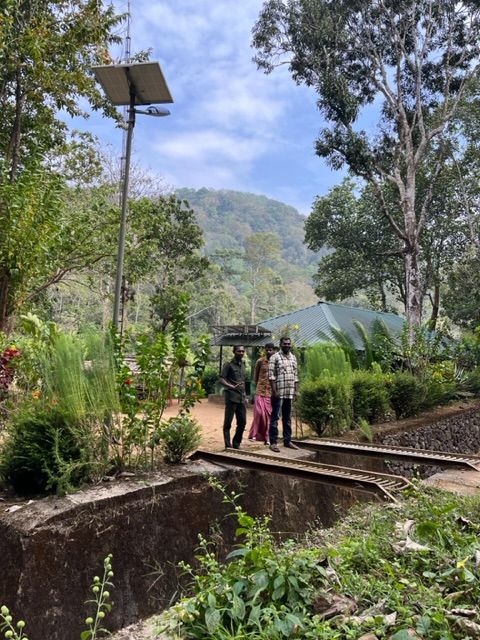
Vi fick också berättat att man fortfarande hämtar honung högt uppe i träden. Man klättrar upp med en lian som är fast med bambupinnar. Vi köpte en burkhonung producerad från skogen. Den ska vi avnjuta på våra våfflor hemma i Sverige medan vi pratar om våra äventyr i Indien. Vi somnade trötta i benen och drömde om skogen och dess fantastiska djur. Imorgon upp tidigt igen för att ta tåget upp till Goa.
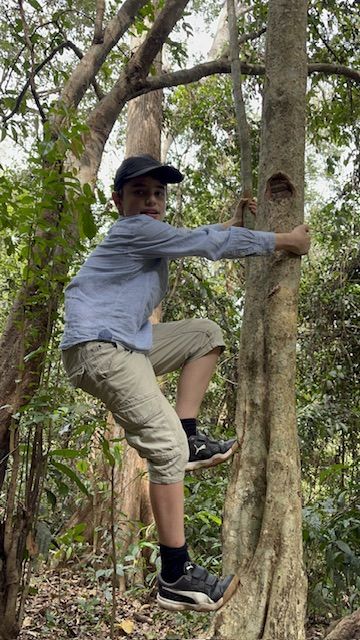
God natt 😴🌙
In English
Certainly! Here is the translation to English:
On January 10th - Forrest Walk
Today, we had to get up early again to drive 1 hour to Vazhachal - Athirappily Forest National Park for a day hike in the woods with Gopi. It's his Blue Yonder that has organized the trip. This national park has only been open for these tours for two months. These tours are organized to provide income from the forest to the indigenous people who used to live in these forests 🌳. When the national park was created, everyone living in the forest was given a house outside the future national park. It was a kind thought, but the result was that the new generation no longer has knowledge of their roots and how to live in the forest. Also, there are no jobs for them. Hence, this initiative has been created to re-educate the younger generation about their forest. We had two lovely girls with us on our tour. Then we had the ranger, who is employed by the national park. He made a secure impression with his rifle, which he said with relief he has never had to use. 🔫
During the tour, we saw two types of monkeys, Lion-tailed macaques and Nilgris Langur which apparently are very rare to see. My theory is that since there is not normally a lot of people here, they don't hide. We'll see if they are still visible after a few years of these tours. 🐒
But right now, they stick to only 24 tourists per day who can do these tours. The entire tour is 12 km, and it took us from 09:00 to 16:30. But we had a nice stop at the Periyar River, the same river in front of Gopi's house where we took a boat ride 🙂, and it was very cool to sit between two large elephant dung piles 💩 🐘 from wild elephants. Behind the river is a tiger reserve that will also open for hikes in a month, with overnight stays. But you have to stay far from the river because there are crocodiles. But where we dipped our feet, they said it was safe, laughter 😂
We didn't see any tigers or elephants, but as mentioned, these beautiful monkeys, incredible Malabar Giant Squirrels, poisonous small snakes Malabar pit vipers, and an enormous millipede. We also saw tracks of a sloth bear that had stolen honey 🍯 from beehives. Oh, we also saw nests of the Hornbill bird. A fascinatingly beautiful bird that, unfortunately, we didn't see "live."
As mentioned, we were also treated to lunch, and it was at a "station" where 2 rangers plus a cook stay for 1 week at a time and then have 3 days off. Their job is to communicate with the other stations in the park. Today, their job is very calm, but five years ago, there was a lot of poaching in the park. But with stricter laws and the knowledge of the new generation, all poaching has now disappeared. Isn't it fantastic? It gives hope. Very interesting was to know that the fence around the ranger's house was not protection from crocodiles but from elephants. In the evenings, they pull up the "gangway" so they can sleep safely. So cool to be in such a forest with wild elephants. 🐘
We were also told that they still collect honey high up in the trees. They climb up with a liana tied with bamboo sticks. We bought a jar of honey produced from the forest. We will enjoy it on our waffles at home in Sweden while talking about our adventures in India. We fell asleep tired in our legs and dreamed of the forest and its amazing animals. Tomorrow up early again to take the train to Goa.
Good night 😴🌙